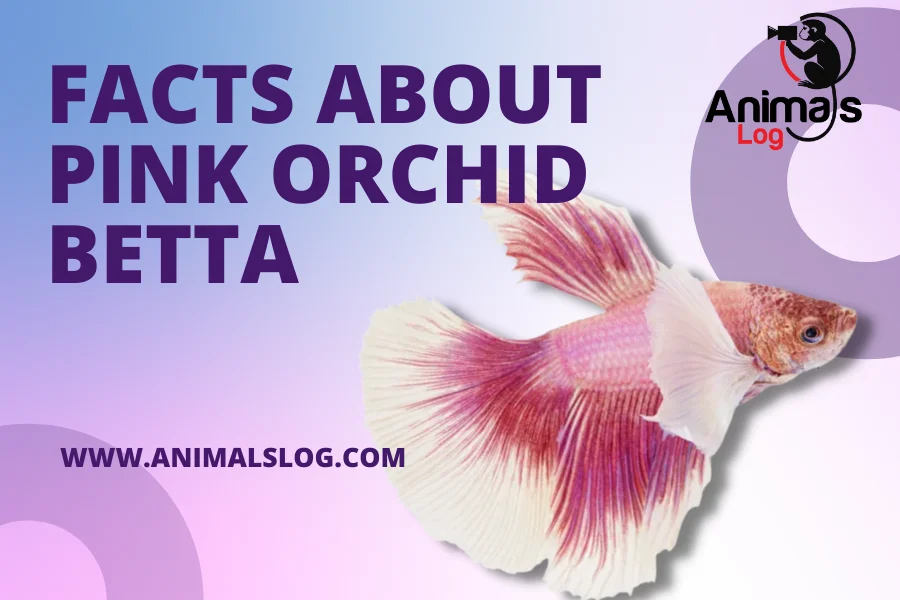Betta fish, or the Siamese fighting fish, are well known in the fish community for their vibrant colors, multiple tail types, and beautiful fin patterns. Even though these fishes come under betta species, with the variety available, one might question whether they are all of the same family. A part of this family is the pink orchid betta.
The unique feature of a pink orchid betta fish is its fluorescence. Typically, betta fish are available in red, yellow, and orange colors, bright but not fluorescent. Nevertheless, this particular betta fish species is well known for its fluorescent color property. They are extremely rare in nature, and their distinguished color might confuse albino betta species, cellophane bettas, white betta fish, and pink orchid betta species.
This is because the species all lack pigmentation and are somewhat translucent, giving them a baby pinkish appearance. They are not pink in color. It is extremely rare to find such betta species which lack pigmentation o rare pink in color. Let us know more about pink orchid betta fish.
Pink Orchid Betta: About
A Pink Orchid Betta Fish is a Siamese battle fish that first appeared in 1908. The majority of them are kept as aesthetic decor fish. Pink Bettas come in various morphologies, including crowntail, veiltail, and marbles types, but actual Pink Bettas of any variation, not white or albino bettas, which appear to be pink, but actual pink orchid betta are extremely rare.
The orchid is a bright pink tint with white and crimson stripes across its belly. A Pink Orchid Betta has been bred to be tiny compared to other bettas and less violent than other Siamese fighting fish. These fish differ in length ranging from six inches to two feet.
The Pink Orchid Betta fish has a unique appeal since the color of its body changes according to different phases of its life cycle. As they get older, their color evolves until they fully mature, at which point it remains static till they die.
The Pink Orchid Betta Fish is a colorful fish with many colors. They have a long, waving tail and thrive in tanks with gravel, shrubs, and other decorations. Their life expectancy is three to five years.
Since they are so rare and beautiful, we think you should take extra care of pink orchid betta. However, we promote taking care of all the fish equally. Taking care of pink orchid betta is not a challenging task; it is pretty much like other betta fish.
Pink Orchid Betta Fish: Care Guide

Tank Requirements
The Betta fish came from Asia’s Mekong River and was first cultivated in Thailand. It can flourish in confined settings because of its small size. However, keeping a betta at a minimum of a 3-gallon tank is always recommended, and the pink orchid betta is no exception. Purchase a tank with a wide width rather than a tall height.
Ensure you have enough room for hiding places such as moss, plants, pebbles, and anything else your betta might prefer, such as gravel. Also, make sure there are enough tank things for your fish to hide in or play with. This will prevent boredom and stress in your pink orchid betta.
Water Parameters
Water parameters include water temperature, pH level, nitrate, and ammonia levels, of the tank. When it comes to a rare and as sensitive fish as a pink orchid betta, it becomes vital to take note of the water condition it requires to thrive for 3 to 5 years.
Bettas are sensitive to pH levels, thus maintaining a pH range of 6.5-7.5 for them. This is the spectrum of tap water. A stable pH level can aid in the prevention of nitrite intoxication, which can be fatal if left unchecked. A pH and roughness test kit is a helpful approach to keeping track of these factors.
Bettas prefer temperatures of 75-80 degrees Fahrenheit. To minimize extreme swings in temperature or pH levels, use a thermometer to check your tank’s temperature. To keep water temperature and nitrate levels in check, you also need to install a filter and a heater.
Dietary Needs

Like every other betta fish, Pink Orchid betta is omnivorous and needs a protein to survive. They prefer to graze on the tank water’s top, so keeping it clear of plants is a smart option. They’re also known to be fussy eaters at times. Betta food, which is full of protein and designed with all they need to survive, is a perfect diet for them. Pellets, flakes, shrimp, mosquito larvae, and chilled worms are good options.
It’s possible to overfeed pink orchid betta vicarious on their diet. Overfeeding should be avoided, and meals should be given no more than twice a day. Overfeeding a pink orchid sickness could cause the gorgeous fish to have swim bladder disease, shortening their lifespan.
Lights And Plants
Betta fish are like humans, active during the day and resting at night. This can be accomplished by positioning their aquarium windowsill, but not directly in the sun. Green algae may grow in the tank if exposed to direct sunlight, necessitating regular cleaning. Artificial lighting is preferred since it is significantly more controllable.
Betta fish prefer plants and hiding places because they help them feel confident and relaxed, particularly while napping, and as a result, they are less likely to experience stress and, as a result, illness. The most excellent option is to utilize live plants because they can benefit the water in your tank.
Pink Orchid Betta Fish Names: Males

- Punch
- Salmon
- Rogue
- Melony
- Coral
- Boomer
- Flamingo
Pink Orchid Betta Fish Names: Females
- Blush
- Strawberry
- Magenta
- Peachy
- Pinky
- Rose
- Sweety
- Cotton
- Candy
Frequently Asked Questions (FAQs):
Are pink orchid betta fish rare?
Yes, they are extremely rare. Locating them and keeping them as a pet is challenging. However, if you are lucky enough, you might find one.
Is a pink orchid betta male or female?
They can be both. It is difficult to understand their gender until they are mature. But once they grow, it can be easy to understand their gender.
How big do pink orchid bettas get?
They can grow up to 6 to 8 inches long. Their long streamy crowntail makes them grow such tall.
Final Thoughts:
Betta fish are known for their hostile and aggressive nature around the globe. Even after this temperament, they are the go-to pet fish for most people for a reason, because of their color ranges and jolly nature. One such color variation is pink orchid betta fish. Keeping a pink orchid betta will be the best decision you make, provided you give it the best habitat.







